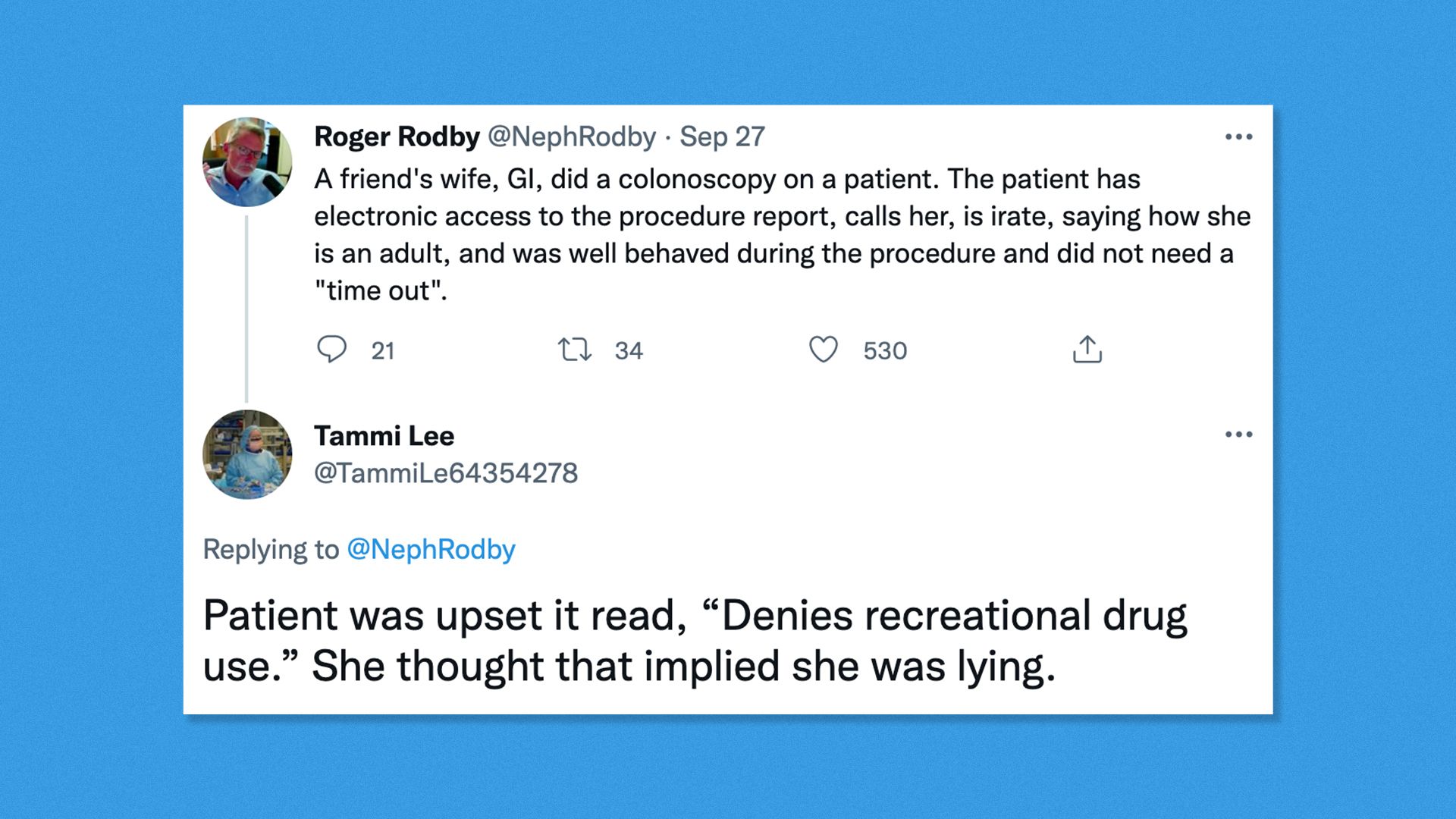| |
| |
| |
| Presented By PhRMA |
| |
| Axios Vitals |
| By Tina Reed ·Sep 29, 2021 |
| Good morning, Vitals readers. Today's newsletter is 815 words or a 3-minute read. Situational awareness: Join the Axios' team at 4pm today for an Axios Instagram Live discussion with George Washington University's Leana Wen on going "Back to School During COVID." - And, join Axios' Sam Baker and me tomorrow at 12:30pm ET for a virtual event on how COVID-19 has exacerbated America's opioid crisis. Register here.
|
| |
| |
| 1 big thing: Democrats' tough choices |
 |
|
| Illustration: Sarah Grillo/Axios |
| |
| Democrats may soon have to decide whether to shrink their health policy ambitions or pick fights with more of the industry, Axios' Caitlin Owens writes. The big picture: House Democrats have proposed using the savings from allowing Medicare to negotiate prescription drug prices to pay for a lot of their $3.5 trillion reconciliation package. - But several moderate Democrats have taken issue with the scope of the House's approach to Medicare negotiations, and with spending $3.5 trillion.
- If Democrats have to soften the policy, they'll likely end up with less savings available to pay for their plans to expand Medicare benefits or closing the Medicaid expansion gap.
One solution is to delay those programs, or to set them to expire after a certain amount of time. But there's no guarantee that a future Congress would extend them. - Democrats could also make bigger cuts to other industry groups, like hospitals or insurers. But this would risk mobilizing these industries against the bill.
- Or they could make the proposed benefits less generous — for example, seniors could be required to pay a premium on Medicare's expanded benefits.
But beyond the Medicare benefit expansion, "there aren't great options to pare back the other big coverage policies in the mix," said Brookings Institution economic studies fellow Matt Fiedler. Go deeper. |
    |
| |
| |
| 2. Parents may not want vaccine for young kids |
 |
|
| Illustration: Eniola Odetunde/Axios |
| |
| While the U.S. is inching toward expanding COVID-19 vaccines to kids younger than 11, many parents may not be eager to take advantage of them, according to the latest installment of the Axios/Ipsos Coronavirus Index. By the numbers: Of those polled with kids between the ages of 5 and 11, 44% said it was likely or somewhat likely they'd get their child vaccinated. - But 42% said they were not likely to get the shot for their kids.
- In comparison, 57% of parents with kids ages 12 to 17 said their kid was already vaccinated or likely to get the shot, while 40% said they were not likely to get the shot for their child.
Driving the news: Pfizer and BioNTech submitted initial data on Tuesday on their coronavirus vaccine for children ages 5 to 11 to the FDA. What we're watching: It's still early and the parent sentiment could change as vaccines for younger kids become a reality. |
    |
| |
| |
| 3. Ivermectin prescriptions soar |
 |
|
| A tablet of ivermectin. Photo: Dimas Ardian/Bloomberg via Getty Images |
| |
| Prescriptions for Ivermectin soared more than 70% between 2019 and the beginning of 2021, according to insurance claim data compiled by Komodo Health. Why it matters: Ivermectin — which has some dermatological uses in humans but is mostly for veterinary purposes — has not been shown to be at all effective against COVID, yet its use has soared, fueled in part by rampant misinformation. What they're saying: "We're doing an insurance claims analysis — providers are writing those prescriptions and pharmacists are filling them," Tabby Khan, Komodo's medical director, told Axios. - "It's like: How deep does this disinformation go that it's now impacting providers?"
The intrigue: The Komodo data appears to illuminate, in many settings, a backdoor for patients to obtain the drug for off-label use. - Prescriptions from dermatologists, the specialty that has traditionally been the most likely to recommend the drug, rose only 2% during the study time period.
- At the same time, prescriptions for the drug from doctors in anesthesiology, physical medicine and rehabilitation, and pulmonary disease specialties increased 1,319%, 1,301%, and 1,167%, respectively.
The bottom line: "This is just a small pot of the Ivermectin being taken in the United States right now, because for every physician and insurance claim that gets filed, you'll also see people going to animal supply stores or paying out of pocket. This is really concerning," Khan said. Share this story. |
    |
| |
| |
| A message from PhRMA |
| People want choice and access to medicines in Medicare – not barriers |
| |
 |
| |
| Right now, Medicare Part D includes a provision that protects access to medicines. But some politicians want to take that away. That would mean that you could be stuck with whatever medicines the government says you can have. Ask Congress if your medicine will be at risk in Medicare. |
| |
| |
| 4. Lead exposures in children persist |
 Reproduced from JAMA Pediatrics; Map: Axios Visuals More than half of children under 6 years old in the U.S. have detectable lead levels in their blood, Axios' Marisa Fernandez reports from a new study. Why it matters: While the U.S. has made major strides over the last several decades combating lead exposure among kids, it persists. - The study, published in JAMA Pediatrics on Monday, found higher exposures among kids living in lower-income communities or neighborhoods with homes built prior to the 1950s.
- Nearly 2% had enough lead in their blood to affect their cognitive development.
The bottom line: The CDC and the World Health Organization concluded in 2019 there is no safe level of lead exposure. |
    |
| |
| |
| 5. Catch up quick |
| |
    |
| |
| |
| 6. 1 fun thing: The problem with transparency |
 |
|
| Screenshot: @NephRodby (Twitter) |
| |
| Typically, transparency with patients is seen as a good thing. - But it can lead to some amusing misunderstandings when patients read their charts, as health care Twitter attested to this week.
|
    |
| |
| |
| A message from PhRMA |
| People want choice and access to medicines in Medicare – not barriers |
| |
 |
| |
| Right now, Medicare Part D includes a provision that protects access to medicines. But some politicians want to take that away. That would mean that you could be stuck with whatever medicines the government says you can have. Ask Congress if your medicine will be at risk in Medicare. |
| |
| Have a fun anecdote about a medical chart misunderstanding? Story tips? Email me at tina.reed@axios.com. |
 | | It'll help you deliver employee communications more effectively. | | |










No comments:
Post a Comment